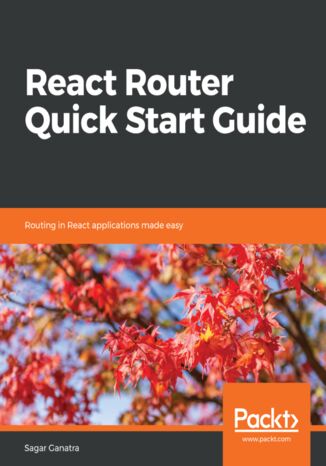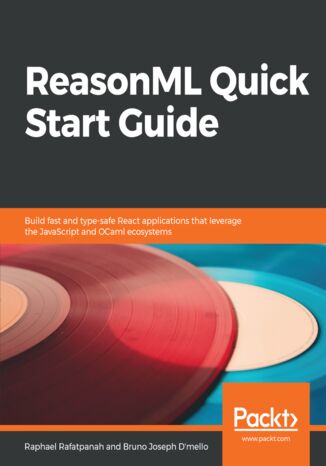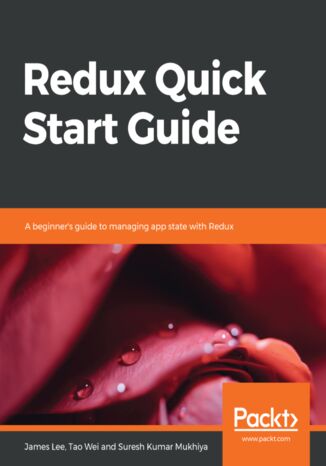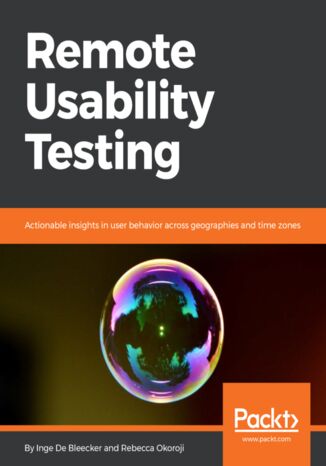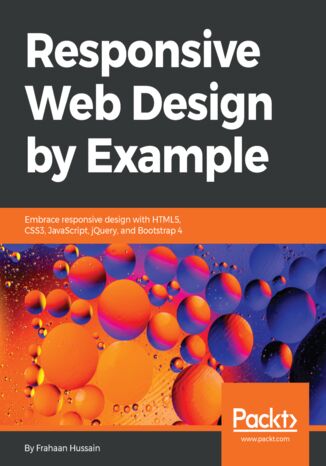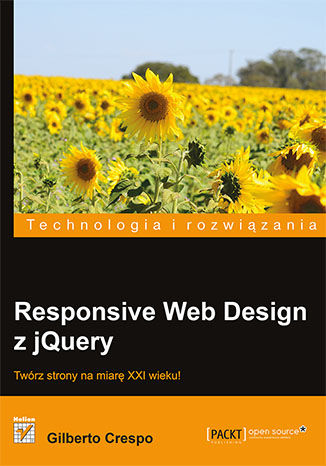Categories
Ebooks
-
Business and economy
- Bitcoin
- Businesswoman
- Coaching
- Controlling
- E-business
- Economy
- Finances
- Stocks and investments
- Personal competence
- Computer in the office
- Communication and negotiation
- Small company
- Marketing
- Motivation
- Multimedia trainings
- Real estate
- Persuasion and NLP
- Taxes
- Social policy
- Guides
- Presentations
- Leadership
- Public Relation
- Reports, analyses
- Secret
- Social Media
- Sales
- Start-up
- Your career
- Management
- Project management
- Human Resources
-
For children
-
For youth
-
Education
-
Encyclopedias, dictionaries
-
E-press
- Architektura i wnętrza
- Health and Safety
- Biznes i Ekonomia
- Home and garden
- E-business
- Ekonomia i finanse
- Esoterecism
- Finances
- Personal finance
- Business
- Photography
- Computer science
- HR & Payroll
- For women
- Computers, Excel
- Accounts
- Culture and literature
- Scientific and academic
- Environmental protection
- Opinion-forming
- Education
- Taxes
- Travelling
- Psychology
- Religion
- Agriculture
- Book and press market
- Transport and Spedition
- Healthand beauty
-
History
-
Computer science
- Office applications
- Data bases
- Bioinformatics
- IT business
- CAD/CAM
- Digital Lifestyle
- DTP
- Electronics
- Digital photography
- Computer graphics
- Games
- Hacking
- Hardware
- IT w ekonomii
- Scientific software package
- School textbooks
- Computer basics
- Programming
- Mobile programming
- Internet servers
- Computer networks
- Start-up
- Operational systems
- Artificial intelligence
- Technology for children
- Webmastering
-
Other
-
Foreign languages
-
Culture and art
-
School reading books
-
Literature
- Antology
- Ballade
- Biographies and autobiographies
- For adults
- Dramas
- Diaries, memoirs, letters
- Epic, epopee
- Essay
- Fantasy and science fiction
- Feuilletons
- Work of fiction
- Humour and satire
- Other
- Classical
- Crime fiction
- Non-fiction
- Fiction
- Mity i legendy
- Nobelists
- Novellas
- Moral
- Okultyzm i magia
- Short stories
- Memoirs
- Travelling
- Narrative poetry
- Poetry
- Politics
- Popular science
- Novel
- Historical novel
- Prose
- Adventure
- Journalism, publicism
- Reportage novels
- Romans i literatura obyczajowa
- Sensational
- Thriller, Horror
- Interviews and memoirs
-
Natural sciences
-
Social sciences
-
School textbooks
-
Popular science and academic
- Archeology
- Bibliotekoznawstwo
- Cinema studies
- Philology
- Polish philology
- Philosophy
- Finanse i bankowość
- Geography
- Economy
- Trade. World economy
- History and archeology
- History of art and architecture
- Cultural studies
- Linguistics
- Literary studies
- Logistics
- Maths
- Medicine
- Humanities
- Pedagogy
- Educational aids
- Popular science
- Other
- Psychology
- Sociology
- Theatre studies
- Theology
- Economic theories and teachings
- Transport i spedycja
- Physical education
- Zarządzanie i marketing
-
Guides
-
Game guides
-
Professional and specialist guides
-
Law
- Health and Safety
- History
- Road Code. Driving license
- Law studies
- Healthcare
- General. Compendium of knowledge
- Academic textbooks
- Other
- Construction and local law
- Civil law
- Financial law
- Economic law
- Economic and trade law
- Criminal law
- Criminal law. Criminal offenses. Criminology
- International law
- International law
- Health care law
- Educational law
- Tax law
- Labor and social security law
- Public, constitutional and administrative law
- Family and Guardianship Code
- agricultural law
- Social law, labour law
- European Union law
- Industry
- Agricultural and environmental
- Dictionaries and encyclopedia
- Public procurement
- Management
-
Tourist guides and travel
- Africa
- Albums
- Southern America
- North and Central America
- Australia, New Zealand, Oceania
- Austria
- Asia
- Balkans
- Middle East
- Bulgary
- China
- Croatia
- The Czech Republic
- Denmark
- Egipt
- Estonia
- Europe
- France
- Mountains
- Greece
- Spain
- Holand
- Iceland
- Lithuania
- Latvia
- Mapy, Plany miast, Atlasy
- Mini travel guides
- Germany
- Norway
- Active travelling
- Poland
- Portugal
- Other
- Przewodniki po hotelach i restauracjach
- Russia
- Romania
- Slovakia
- Slovenia
- Switzerland
- Sweden
- World
- Turkey
- Ukraine
- Hungary
- Great Britain
- Italy
-
Psychology
- Philosophy of life
- Kompetencje psychospołeczne
- Interpersonal communication
- Mindfulness
- General
- Persuasion and NLP
- Academic psychology
- Psychology of soul and mind
- Work psychology
- Relacje i związki
- Parenting and children psychology
- Problem solving
- Intellectual growth
- Secret
- Sexapeal
- Seduction
- Appearance and image
- Philosophy of life
-
Religion
-
Sport, fitness, diets
-
Technology and mechanics
Audiobooks
-
Business and economy
- Bitcoin
- Businesswoman
- Coaching
- Controlling
- E-business
- Economy
- Finances
- Stocks and investments
- Personal competence
- Communication and negotiation
- Small company
- Marketing
- Motivation
- Real estate
- Persuasion and NLP
- Taxes
- Social policy
- Guides
- Presentations
- Leadership
- Public Relation
- Secret
- Social Media
- Sales
- Start-up
- Your career
- Management
- Project management
- Human Resources
-
For children
-
For youth
-
Education
-
Encyclopedias, dictionaries
-
E-press
-
History
-
Computer science
-
Other
-
Foreign languages
-
Culture and art
-
School reading books
-
Literature
- Antology
- Ballade
- Biographies and autobiographies
- For adults
- Dramas
- Diaries, memoirs, letters
- Epic, epopee
- Essay
- Fantasy and science fiction
- Feuilletons
- Work of fiction
- Humour and satire
- Other
- Classical
- Crime fiction
- Non-fiction
- Fiction
- Mity i legendy
- Nobelists
- Novellas
- Moral
- Okultyzm i magia
- Short stories
- Memoirs
- Travelling
- Poetry
- Politics
- Popular science
- Novel
- Historical novel
- Prose
- Adventure
- Journalism, publicism
- Reportage novels
- Romans i literatura obyczajowa
- Sensational
- Thriller, Horror
- Interviews and memoirs
-
Natural sciences
-
Social sciences
-
Popular science and academic
-
Guides
-
Professional and specialist guides
-
Law
-
Tourist guides and travel
-
Psychology
- Philosophy of life
- Interpersonal communication
- Mindfulness
- General
- Persuasion and NLP
- Academic psychology
- Psychology of soul and mind
- Work psychology
- Relacje i związki
- Parenting and children psychology
- Problem solving
- Intellectual growth
- Secret
- Sexapeal
- Seduction
- Appearance and image
- Philosophy of life
-
Religion
-
Sport, fitness, diets
-
Technology and mechanics
Videocourses
-
Data bases
-
Big Data
-
Biznes, ekonomia i marketing
-
Cybersecurity
-
Data Science
-
DevOps
-
For children
-
Electronics
-
Graphics/Video/CAX
-
Games
-
Microsoft Office
-
Development tools
-
Programming
-
Personal growth
-
Computer networks
-
Operational systems
-
Software testing
-
Mobile devices
-
UX/UI
-
Web development
-
Management
Podcasts
- Ebooks
- Webmastering
- Web Design
Web Design
React Router Quick Start Guide. Routing in React applications made easy
React Router is the routing library for React, and it can be used in both React Web and React Native applications. This book is a simple way to get started with React Router and harness its full power for your applications.The book starts with an introduction to React Router and teaches you how to create your first route using the React component. You will then learn about configuring your routes, passing parameters, and creating nested routes. You will be introduced to various components in React-Router and learn different configuration options available for these components. You will then see how to use the Redirect and Switch components. For even greater ?exibility, you will learn about BrowserRouter, HashRouter, NativeRouter, and StaticRouter.By the end of the book, you will have set up a project with React Router and make routing configuration work in a server-side rendered React application, a mobile application built with React Native and also understand how Redux and React-Router can be used in the same application.
Real-World SRE. The Survival Guide for Responding to a System Outage and Maximizing Uptime
Real-World SRE is the go-to survival guide for the software developer in the middle of catastrophic website failure. Site Reliability Engineering (SRE) has emerged on the frontline as businesses strive to maximize uptime. This book is a step-by-step framework to follow when your website is down and the countdown is on to fix it. Nat Welch has battle-hardened experience in reliability engineering at some of the biggest outage-sensitive companies on the internet. Arm yourself with his tried-and-tested methods for monitoring modern web services, setting up alerts, and evaluating your incident response.Real-World SRE goes beyond just reacting to disaster—uncover the tools and strategies needed to safely test and release software, plan for long-term growth, and foresee future bottlenecks. Real-World SRE gives you the capability to set up your own robust plan of action to see you through a company-wide website crisis.The final chapter of Real-World SRE is dedicated to acing SRE interviews, either in getting a first job or a valued promotion.
Raphael Rafatpanah, Bruno Joseph D'mello
ReasonML, also known as Reason, is a new syntax and toolchain for OCaml that was created by Facebook and is meant to be approachable for web developers. Although OCaml has several resources, most of them are from the perspective of systems development. This book, alternatively, explores Reason from the perspective of web development.You'll learn how to use Reason to build safer, simpler React applications and why you would want to do so. Reason supports immutability by default, which works quite well in the context of React.In learning Reason, you will also learn about its ecosystem – BuckleScript, JavaScript interoperability, and various npm workflows. We learn by building a real-world app shell, including a client-side router with page transitions, that we can customize for any Reason project. You'll learn how to leverage OCaml's excellent type system to enforce guarantees about business logic, as well as preventing runtime type errors.You'll also see how the type system can help offload concerns that we once had to keep in our heads.We'll explore using CSS-in-Reason, how to use external JSON in Reason, and how to unit-test critical business logic. By the end of the book, you'll understand why Reason is exploding in popularity and will have a solid foundation on which to continue your journey with Reason.
Redux Quick Start Guide. A beginner's guide to managing app state with Redux
James Lee, Tao Wei, Suresh Kumar Mukhiya
Starting with a detailed overview of Redux, we will follow the test-driven development (TDD) approach to develop single-page applications. We will set up JEST for testing and use JEST to test React, Redux, Redux-Sage, Reducers, and other components. We will then add important middleware and set up immutableJS in our application. We will use common data structures such as Map, List, Set, and OrderedList from the immutableJS framework. We will then add user interfaces using ReactJS, Redux-Form, and Ant Design.We will explore the use of react-router-dom and its functions. We will create a list of routes that we will need in order to create our application, and explore routing on the server site and create the required routes for our application. We will then debug our application and integrate Redux Dev tools.We will then set up our API server and create the API required for our application. We will dive into a modern approach to structuring our server site components in terms of Model, Controller, Helper functions, and utilities functions. We will explore the use of NodeJS with Express to build the REST API components. Finally, we will venture into the possibilities of extending the application for further research, including deployment and optimization.
Remote Usability Testing. Actionable insights in user behavior across geographies and time zones
Inge De Bleecker, Rebecca Okoroji
Usability testing is a subdiscipline of User Experience. Its goal is to ensure that a given product is easy to use and the user's experience with the product is intuitive and satisfying. Usability studies are conducted with study participants who are representative of the target users to gather feedback on a user interface. The feedback is then used to refine and improve the user interface.Remote studies involve fewer logistics, allow participation regardless of location and are quicker and cheaper to execute compared to in person studies, while delivering valuable insights. The users are not inhibited by being in a new environment under observation; they can act naturally in their familiar environment. Remote unmoderated studies additionally have the advantage of being independent of time zones.This book will teach you how to conduct qualitative remote usability studies, in particular remote moderated and unmoderated studies. Each chapter provides actionable tips on how to use each methodology and how to compensate for the specific nature of each methodology. The book also provides material to help with planning and executing each study type.
Desktop-only websites just aren't good enough anymore. As you enter a future of increasingly diverse browsing methods, you need to know how to build websites that are presentable and will work perfectly with the huge volume of different device sizes and resolutions that are now commercially available. Responsive web design is an answer to the problem of modern web development.By following the detailed step-by-step instructions, previews, and examples mentioned in this book, you will learn how to build engaging responsive websites and upgrade your skills as a web designer.With coverage of Responsive Grid System and Bootstrap, you will learn about the most powerful frameworks in responsive web design. In this book, you will learn how to create a crisp blog page, a beautiful portfolio site, a cool social networking page, and a fun photo gallery. Through each of these projects, you'll learn how to build various elements of a modern responsive website, and also find out which framework works best for your project specifications. By the end of the book, you will have gained practical skills you need to build real-world websites that are professional, creative and truly responsive.
Responsive Web Design. Projektowanie elastycznych witryn w HTML5 i CSS3. Wydanie III
Jeszcze dziesięć lat temu responsywność strony internetowej była traktowana jako ciekawostka. Dziś jest powszechnym standardem. Znane od dawna klasyczne technologie HTML i CSS wciąż zachowują świeżość i wyjątkową przydatność w tworzeniu nowoczesnych stron internetowych. Społeczności skupione wokół tych narzędzi starannie dbają o ich nieustanny rozwój, dzięki czemu za ich pomocą nadal można osiągać imponujące efekty i spełniać coraz wyższe standardy. Oznacza to, że każdy szanujący się programista front-endu powinien na bieżąco śledzić nowości i uczyć się korzystania z sukcesywnie pojawiających się funkcjonalności HTML i CSS. Ta książka jest kolejnym, uaktualnionym i uzupełnionym wydaniem lubianego podręcznika projektowania responsywnych stron internetowych. Omówiono w niej wszystkie nowości i ulepszenia z dziedziny projektowania responsywnych stron internetowych, w tym zapewnianie lepszej dostępności, fonty zmienne czy kontrola przewijania strony. Szczegółowo opisano moduł CSS Grid i mechanizm tworzenia układów Flexbox. Zaprezentowano wiele praktycznych informacji o SVG, wymogach dostępności, efektach w CSS, definiowaniu przejść, transformacji i animacji oraz włączaniu do kodu zapytań medialnych. Znakomitym uzupełnieniem treści są autorskie wskazówki i uwagi do programowania front-endu. Najważniejsze zagadnienia: dostosowywanie arkuszy stylów do potrzeb różnych urządzeń pisanie przejrzystego, szybkiego i bogatego semantycznie kodu HTML grafiki w formacie SVG w projektach responsywnych najnowsze możliwości CSS: własności użytkownika, fonty zmienne i siatka weryfikacja danych w HTML i inne przydatne funkcje formularzy filtry, cienie, animacje i inne efekty wzbogacające interfejs Współczesny HTML i CSS? Mogą więcej, niż myślisz!
Responsive Web Design z jQuery
Twórz strony na miarę XXI wieku! Jeszcze całkiem niedawno — w świecie bez smartfonów i tabletów — tworzenie stron było zdecydowanie prostsze. Projektanci i deweloperzy nie musieli się martwić o to, jak strona będzie się prezentowała na różnej wielkości ekranach, dopasowywali ją do 2–3 rozdzielczości. Obecnie, w erze urządzeń mobilnych o poziomych, pionowych, małych, średnich i bardzo dużych ekranach, pewnie często zastanawiasz się, jak skutecznie zadbać o responsywność swojej strony. Sięgnij po ten przewodnik i spraw, by zarówno użytkownicy komputerów stacjonarnych, jak i laptopów, tabletów czy smartfonów z przyjemnością korzystali z Twojej witryny. W trakcie lektury dowiesz się, jak budować responsywne strony WWW. Responsywne to znaczy takie, które dostosowują swój wygląd i układ do urządzenia, na którym są przeglądane. Nauczysz się korzystać z dopasowujących się układów i siatek (ang. grids) oraz zbudujesz menu, które wszędzie będzie wyglądało dobrze. Ponadto przekonasz się, że stworzenie galerii, osadzenie mediów oraz atrakcyjnej tabeli dla urządzeń mobilnych nie musi być karkołomnym zadaniem! Na sam koniec dowiesz się, jak testować takie strony, oraz poznasz przydatne wtyczki dla jQuery. Książka ta jest doskonałym źródłem wiedzy dla wszystkich podążających za trendami w tworzeniu stron WWW! Sięgnij po książkę i dowiedz się, jak: stworzyć atrakcyjne menu i galerię wykorzystać możliwości małych ekranów zbudować responsywną tabelę zastosować dodatkowe wtyczki zbudować uniwersalną stronę WWW Zaoszczędź swój czas i twórz uniwersalne strony WWW!

